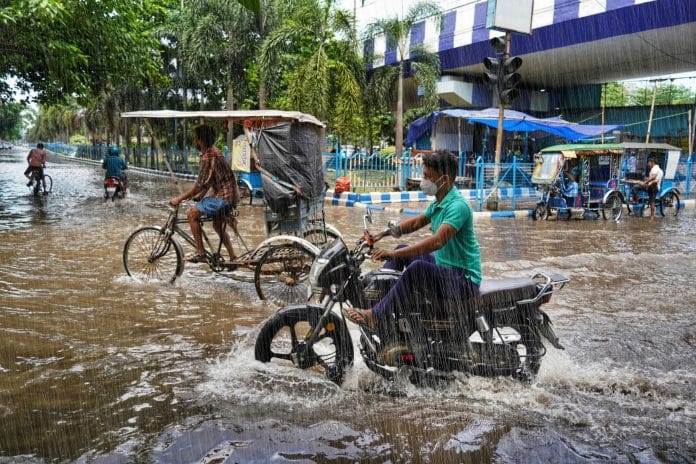By: Prof. Ts. Dr. Manjit Singh Sidhu
For years, Malaysia has undergone consistent and extreme rainfall, leading to numerous challenges for both employees and students commuting to work and school. In light of the recent challenges posed by severe floods and monsoon rains in Malaysia, there is a pressing need to explore technological solutions to ensure the safety of students and the smooth conduct of crucial exams like the Sijil Pelajaran Malaysia, (SPM) and Sijil Tinggi Pelajaran Malaysia (STPM). About 395,870 candidates sat for the SPM 2023 exam recently.
Although the exam proceeded smoothly nationwide, a potential issue preventing students from reaching their centres is flooding. However, a promising solution is integrating RFID-IoT with AI, providing a dynamic system to manage monsoon challenges, especially in flood-prone states like Kelantan, Terengganu, and Pahang.
The following are some innovative solutions that integrates Radio-Frequency Identification (RFID) and the Internet of Things (IoT) with Artificial Intelligence (AI) to construct a robust system capable of dynamically adapting to changing weather conditions:
Flood Monitoring Infrastructure. To initiate this innovative solution, deploying RFID-enabled sensors in flood-prone areas and rivers is crucial. These sensors provide real-time data on water levels, and their integration with IoT devices establishes a network transmitting information to a centralized system. This lays the foundation for a reliable flood monitoring infrastructure, offering timely insights into potential flood risks.
Predictive Analytics. AI systems are essential because they examine past weather trends and flood incidents. The system may be able to identify potential flood threats at certain periods by developing a predictive analytics model, providing crucial information for decision-making. Making plans in advance can help one be more prepared and take preventative measures to decrease the impact of extreme weather events.
Automated Decision-Making. Real-time flood data and predictive analytics contribute to an AI-driven automated decision-making system. This system can evaluate whether it is safe to conduct exams or send students to schools, dynamically adapting to the current flood risk assessments. Such a mechanism ensures the safety of students and minimizes disruptions to educational activities during adverse weather conditions.
Student Safety Measures. RFID-enabled student ID cards are proposed to track students’ movements during their commute to school. Integrating RFID data with AI algorithms enables the monitoring and analysis of the safest routes, taking into account the current flood risk assessments. This not only enhances student safety but also optimizes transportation logistics during challenging weather conditions.
Online Learning Platforms. To address disruptions caused by physical attendance challenges, robust online learning platforms are essential. Personalized instructional content may be created by AI-powered adaptive learning systems to meet the unique demands of each learner, guaranteeing a successful and ongoing learning process. This flexibility is essential to preserving academic continuity during erratic weather disturbances.
Flexible Exam Scheduling. A dynamic test scheduling system driven by artificial intelligence is suggested to adjust to evolving conditions. In the case of severe weather delays, contingency preparations should be in place to enable the smooth transition to online assessments or the postponing of tests. This adaptability guarantees that the educational system will always be strong and able to face new difficulties.
Automated Communication. Communication is key during weather-related challenges. An automated communication system, driven by AI, can inform students, parents, and school staff about current weather conditions, exam schedules, and any changes. This ensures that everyone involved is well-informed and can make necessary adjustments promptly, fostering a collaborative and well-prepared educational community.
Emergency Response Planning. The capacity of authorities to make prompt and efficient judgments during emergencies is improved by incorporating AI algorithms into emergency response plans. This enhances community readiness and response systems overall, promoting student and community safety and wellbeing.
Collaboration with Meteorological Agencies. Forming alliances with meteorological organizations gives the system an extra degree of dependability. AI-driven flood prediction models are more accurate when they have access to the most recent weather forecasts, since this keeps the system updated with the most pertinent data. Collaborative efforts contribute to a more comprehensive and reliable solution.
Continuous Improvement. The success of this integrated system hinges on continuous improvement. Regular updates, feedback incorporation, and adaptation to emerging technologies will ensure that the RFID-IoT and AI solution remains effective in handling unforeseen challenges. This commitment to continuous enhancement ultimately creates a more adaptive and resilient education system in the face of unpredictable weather conditions.
The combination of RFID-IoT and AI provides a comprehensive and technologically sophisticated answer to Malaysia’s monsoon rain and flood concerns. By proactively embracing technology, the school system can ensure student safety, preserve instructional continuity, and respond dynamically to changing weather circumstances. This holistic strategy not only reduces risks, but also creates the groundwork for a robust and adaptable education system capable of enduring the unpredictability of the Malaysian monsoon.
The author is a Professor at the College of Computing and Informatics, Universiti Tenaga Nasional (UNITEN), Fellow of the British Computer Society, Chartered IT Professional, Fellow of the Malaysian Scientific Association, Senior IEEE member and Professional Technologist MBOT Malaysia









